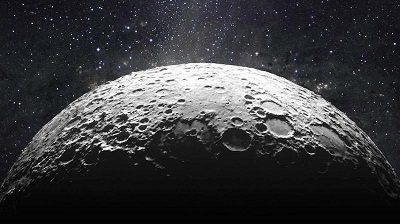
Astronomers have found a moon circling the third largest dwarf planet 2007 OR10 in the Kuiper Belt in the outskirts of our solar system. The discovery was made possible using the combined power of three space observatories, including NASA’s Hubble Space Telescope.
Kuiper Belt is a realm of icy debris—beyond Neptune—left over from our solar system’s formation. The dwarf planet 2007 OR10 is about 955 miles wide, and follows an eccentric orbit like Pluto. It was discovered in 2007 by astronomers Meg Schwamb, Mike Brown, and David Rabinowitz. Its distance from the Sun is about three times the distance between Pluto and Sun. Of the nine dwarf planets in the Kuiper Belt, only Eris and Pluto are larger than 2007 OR10.
The new discovery means moons have been found around almost all dwarf planets more than 600 miles across in the Kuiper Belt.
“The discovery of satellites around all of the known large dwarf planets – except for Sedna – means that at the time these bodies formed billions of years ago, collisions must have been more frequent, and that’s a constraint on the formation models,” said Csaba Kiss of the Konkoly Observatory in Hungary, and the lead author of the study.
“If there were frequent collisions, then it was quite easy to form these satellites,” said Kiss.
Astronomers spotted the moon in archival images of 2007 OR10 taken by the Hubble Telescope. The first indications of the new moon were given by NASA’s Kepler Space Telescope that suggested that 2007 OR10 was rotating more slowly than usual—a rotation period of 45 hours.
“Typical rotation periods for Kuiper Belt Objects are under 24 hours,” Kiss said.
“We looked in the Hubble archive because the slower rotation period could have been caused by the gravitational tug of a moon. The initial investigator missed the moon in the Hubble images because it is very faint,” he said.
The astronomers then looked to the archive images of the Hubble Space Telescope, whose Wide Field Camera 3 had captured the moon twice during two different observation runs in 2009 and 2010.
“The initial investigator missed the moon in the Hubble images because it is very faint,” said. Csaba Kiss.
Researchers then used heat measurements of 2007 OR10 taken by the Herschel Space Observatory in the past. The intent was to estimate the size of the moon.
According to scientists, the moon is gravitationally bound to 2007 OR10 because it moves with the dwarf planet, as seen against a background of stars. It is estimated to be about 240 kilometres to 400 kilometres in diameter.
The detailed findings of the study have been published in The Astrophysical Journal Letters.
